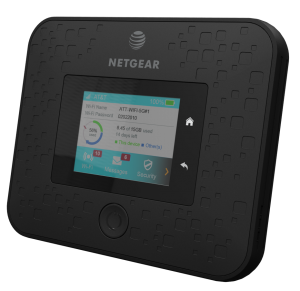Article
Why You’ll Still Need Wifi When 5G Is Everywhere, According To The Wi-Fi Alliance | Gizmodo
Wi-Fi Alliance: Wi-Fi, 5G will be complementary | FierceWireless
My Comments
There is some hype being driven by organisations defending the 5G mobile broadband and Wi-Fi wireless LAN technologies about their technology being the only one for our connected lives.
Some existing devices use 5G mobile-broadband technology but connect to endpoint devices like mobile phones using Wi-Fi. Initially they are routers being deployed by mobile carriers as a proof of concept or for network trials while AT&T were offering a “Mi-Fi” for retail sale in the USA that implements 5G technology. At the moment, 5G hasn’t been rolled out in the form of a smartphone or a mobile-broadband modem that is integrated in or connected by USB to a host computer.
Both Wi-Fi 5 (802.11ac and prior technologies) and 4G LTE mobile broadband have seen widespread deployment with each technology being seen by mobile users as offering a complementary role. Networks and equipment running the newer technologies (5G and Wi-Fi 6) will be backward compatible and offer a best-case approach to this compatibility. That is if both the network and end-user equipment run the same technology, the user gains the most benefit from what the new technology offers.
It has been identified that both technologies at their latest specification can complement each other. Here, 5G will earn its keep in the outdoors and in a mobile context while the Wi-Fi 6 (802.11ax) technology will earn its keep indoors. This is although public-access Wi-Fi networks will be seen by mobile carriers as a cost-effective data-offload tool.
Wi-Fi also has supporting technologies like WiGig and Wi-Fi HaLow. The former one will match 5G for speed but uses a short range equivalent to an ordinary room in the house, while the latter benefits from long range and power efficiency but doesn’t have the speed. Wi-Fi HaLow will then end up in the smart-home, smart-building, connected-car and smart-city application spaces where data throughput isn’t all that necessary. This is while WiGig will end up with virtual reality, augmented reality, 4G video and other bandwidth-intensive applications.
Then there is also the kind of spectrum available for each technology. Wi-Fi technologies primarily rely on unlicensed radio spectrum which makes them popular for households and businesses to deploy. It is in contrast to 5G which, like other cellular mobile telecommunications technologies, relies on licensed radio spectrum which the mobile carrier has to deal with the national radiocommunications authority organise and purchase a license to use.
There is also a trend regarding wireless-network equipment design where there is a software-defined approach towards the media-level components. This is facilitated with small-footprint high-capability computing power and can allow the same piece of equipment to honour newer standards.
Another factor that is never raised is the concept of the local network where data can be transferred between co-located devices at the same premises. 5G is really positioned as a wireless “last mile” setup for providing telecommunications and Internet service to the end-user. This is while Wi-Fi is intended primarily to work as a local network but is used to distribute a single broadband service to multiple endpoint devices.
What really is now seen is that the new 5G mobile broadband and Wi-Fi 6 (802.11ax) LAN technologies can complement each other in a horses-for-courses manner.


